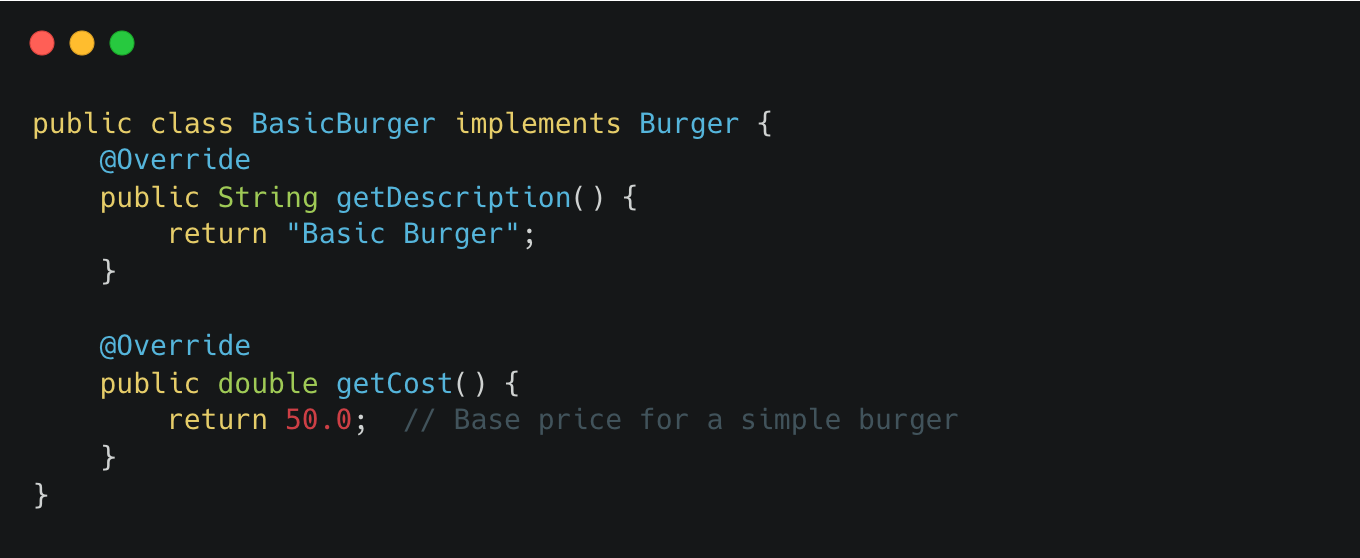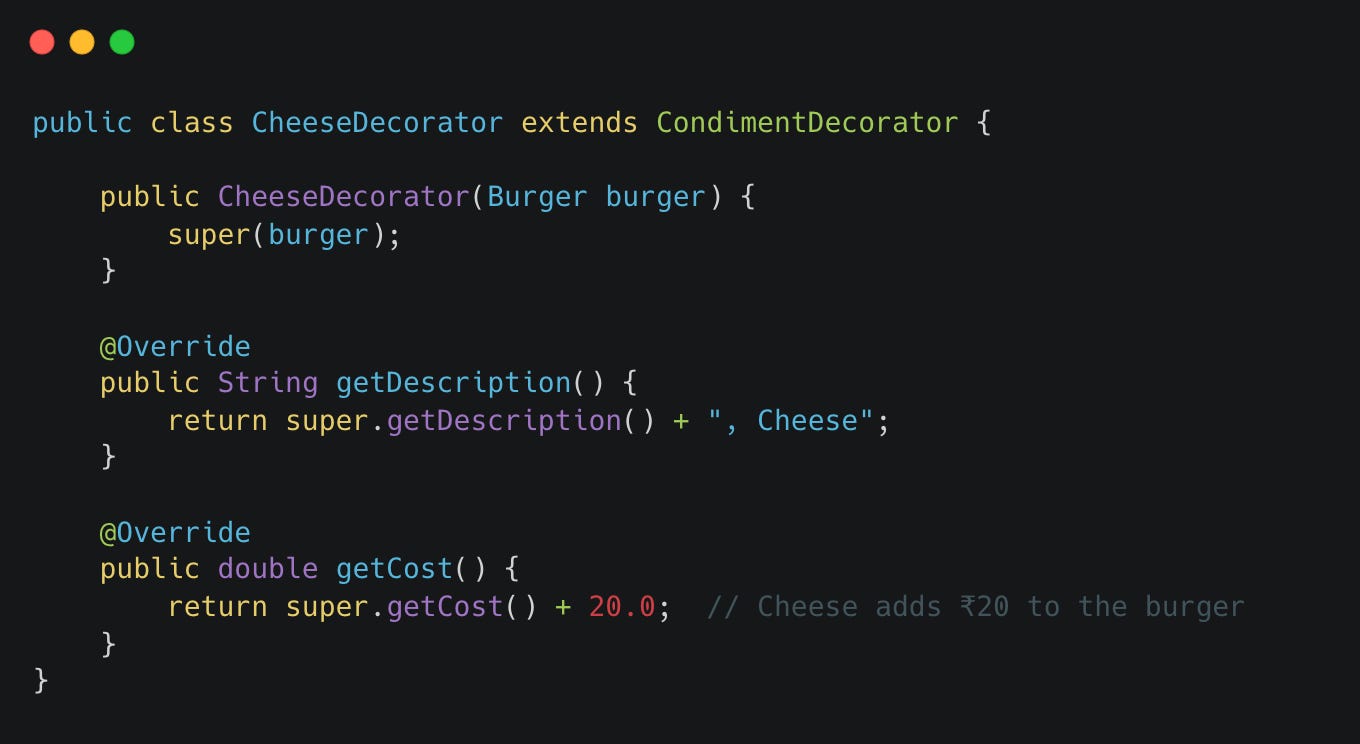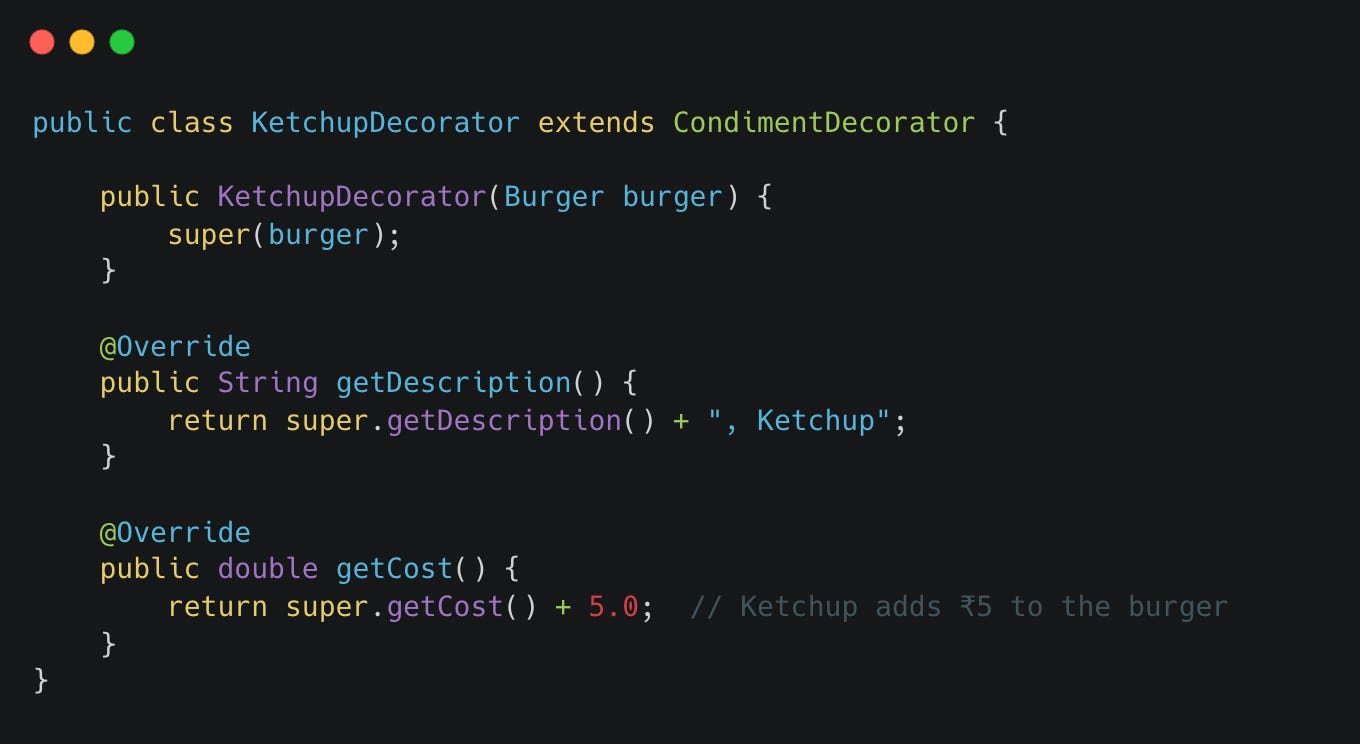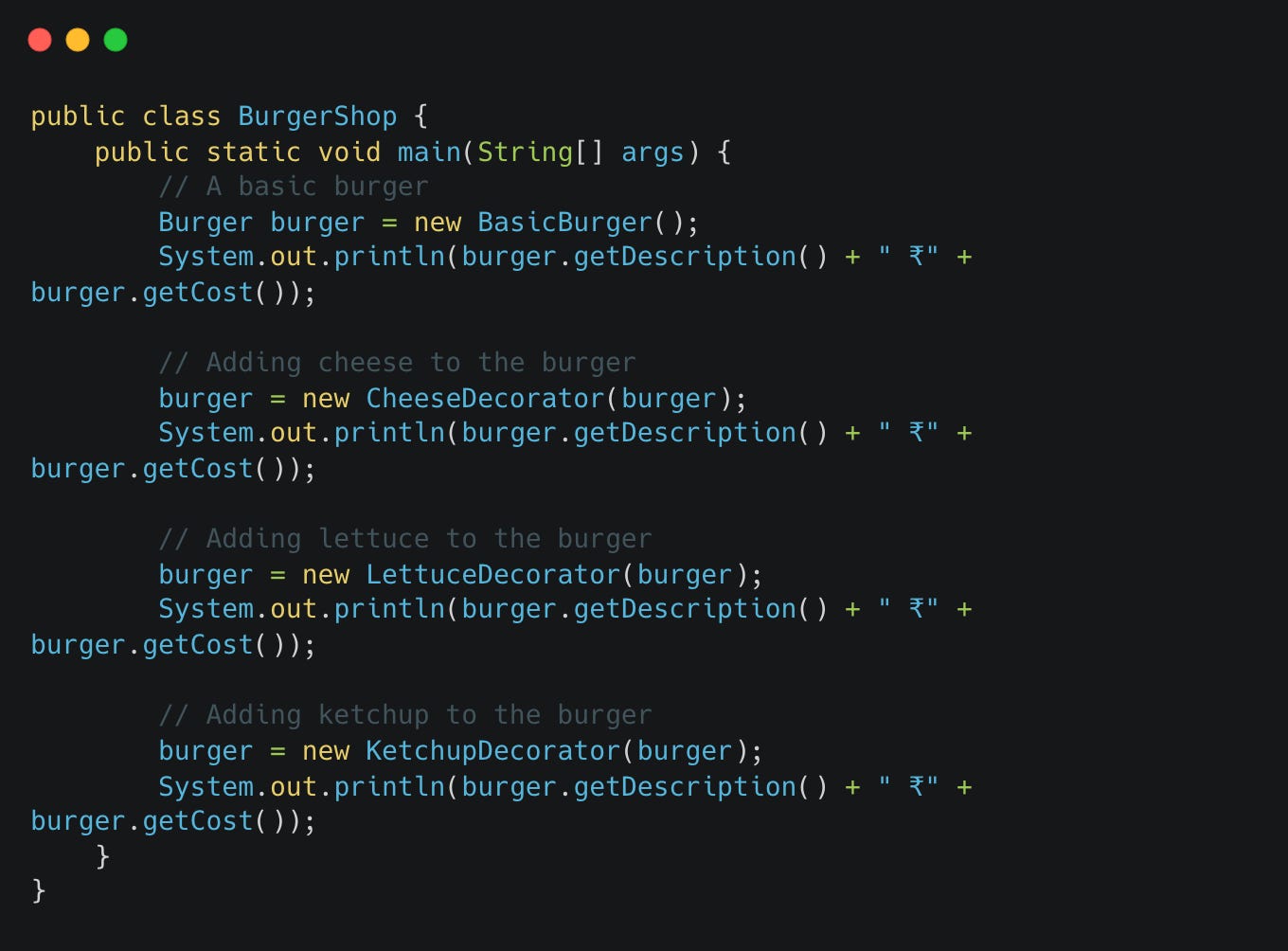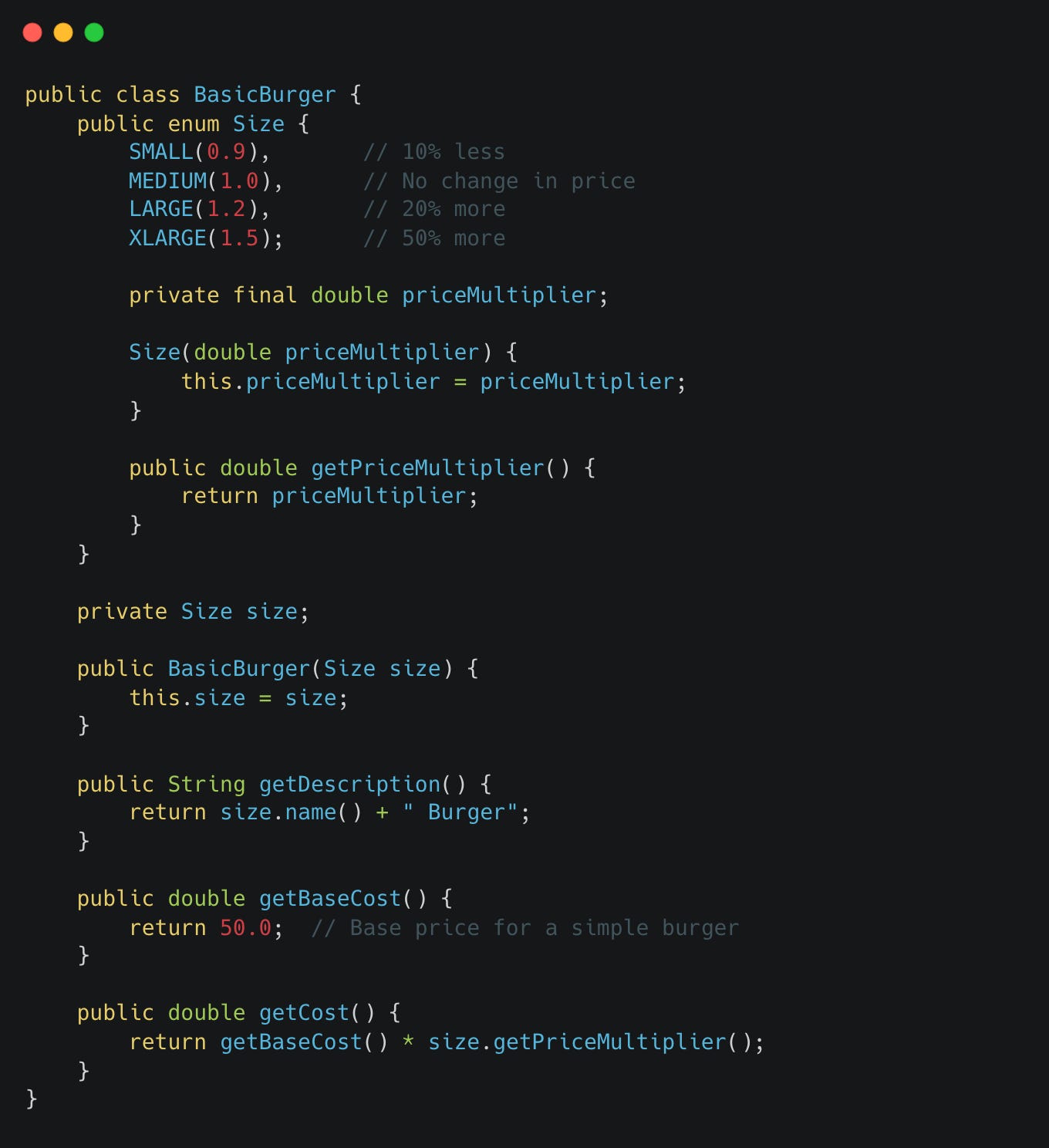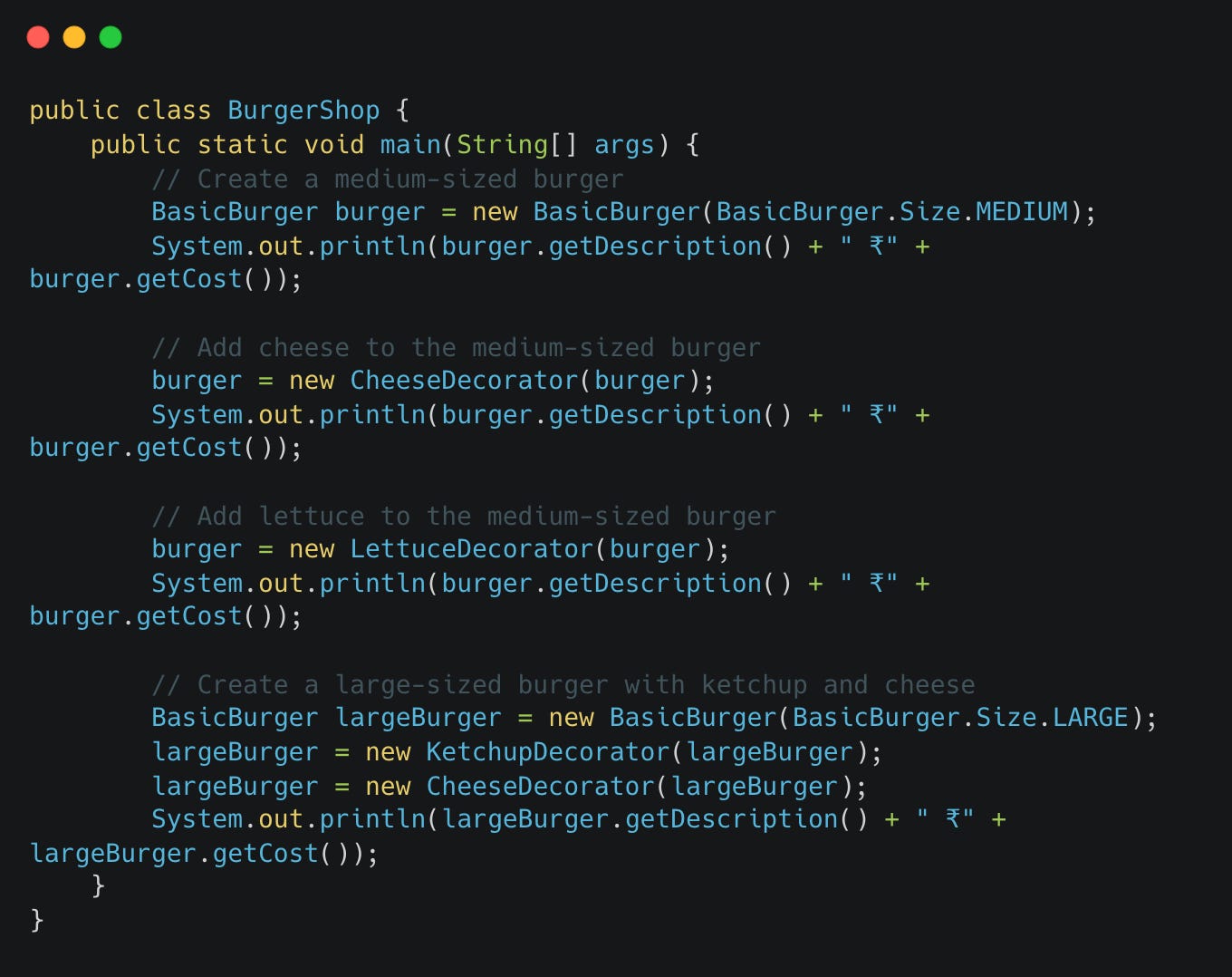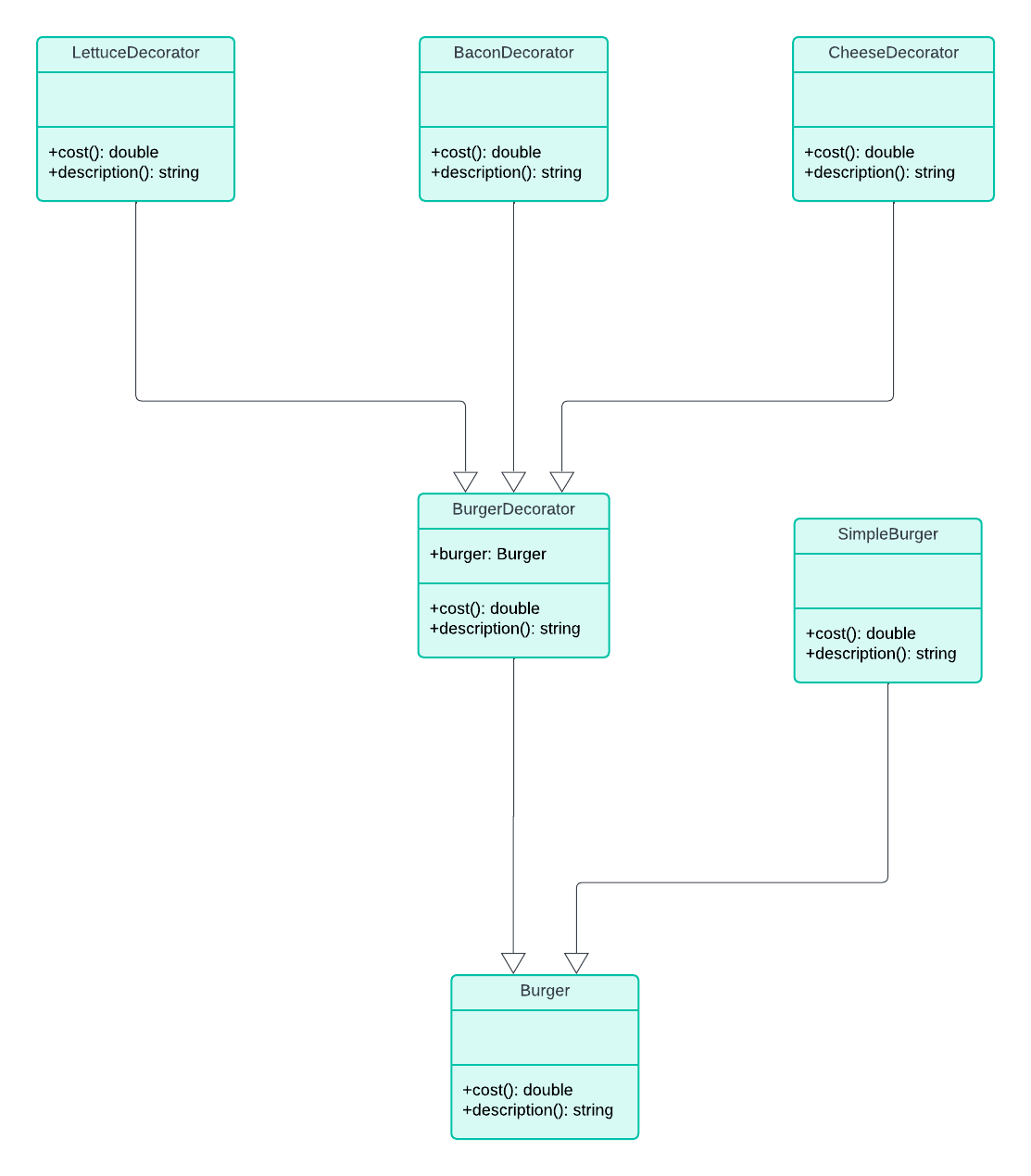Decorator Pattern with Real-World Example
EP05 | System Design | LLD Series | #03
In software development, we often encounter situations where we need to add functionality to objects dynamically. The Decorator Pattern is a structural design pattern that allows us to do this while keeping our code flexible and extensible. Let’s dive into what the Decorator Pattern is, how it works, and see an example on how it works in real world scenarios.
What is the Decorator Pattern?
The Decorator Pattern allows behavior to be added to individual objects, either statically or dynamically, without affecting the behavior of other objects from the same class. It achieves this by using a set of decorator classes that are used to wrap concrete components.
This pattern is particularly useful when you want to add functionalities to objects without altering the structure of the codebase or affecting other objects of the same class. Instead of modifying the core logic of an object, you can wrap it with decorators that extend its behavior.
Real-World Analogy
Let’s take a real world scenario of a Burger joint named Burger Heaven. At the restaurant, a customer can order a plain burger and customize it with various condiments (like cheese, lettuce, mayonnaise, etc.). Additionally, they can choose the size of the burger (small, medium, large, extra-large), which affects both the burger’s base price and the cost of each condiment.
Decorator Pattern - Step by Step Implementation
Step 1: Define the Burger Interface
We define the Burger interface that will declare methods to calculate the total cost and get the description of the burger.
Step 2: Create the Basic Burger Class
The BasicBurger class represents a plain burger. It implements the Burger interface.
Step 3: Create the Condiment Decorator
The CondimentDecorator is an abstract class that will be used to wrap the basic burger. It also implements the Burger interface, so the concrete decorators (condiments) can add their own costs and descriptions.
Step 4: Create Concrete Condiment Decorators
We now create decorators for various condiments like cheese, lettuce, and ketchup.
Cheese Decorator
Lettuce Decorator
Ketchup Decorator
Step 5: Use the Decorators for Burger with Condiments
We can now create a burger and dynamically add condiments to it:
Output:
In this example, we started with a Basic Burger and then added Cheese, Lettuce, and Ketchup dynamically, each of which added to both the description and the cost.
Extending with Burger Sizes
Now, let’s suppose we have the above classes already existing and we got the business requirement that now they want to introduce burgers in different sizes and want to charge extra money for different sizes. So now, we can extend the example by adding different sizes (small, medium, large, extra-large), where each size affects the price of both the burger and the condiments.
Step 1: Define an Enum for Sizes
Let’s first define the Size enum inside the Burger class. Each enum value will store a multiplier for how the price should change depending on the size (e.g., small has a lower cost, extra-large has a higher cost).
All the other decorators would not be changed as they are just using BasicBurger base class.
Step 2: Use the Enum with Condiments
Now, we can dynamically add condiments to a burger with a specific size:
Output:
Class Diagram
The class diagram for the Decorator Pattern looks like this:
Advantages of the Decorator Pattern
Open for Extension, Closed for Modification (OCP): You can extend the behavior of objects without modifying their code.
Flexible Design: You can combine multiple decorators to create a variety of different behaviors.
Single Responsibility Principle (SRP): Each decorator class is responsible for a single piece of functionality, making your code more maintainable.
Disadvantages of the Decorator Pattern
Complexity: With many decorators, the code can become hard to manage, as it introduces many small, similar-looking classes.
Order Sensitivity: The order in which you apply decorators can affect the behavior. For example, adding sugar before milk or vice versa might produce different results.
Overhead: If there are too many layers of decorators, this could introduce some runtime overhead, especially in performance-critical applications.
Handling Disadvantages
Use Composition Carefully: While decorators add flexibility, avoid over-using them. Group related behaviors logically and try to limit the number of decorators you apply to any one object.
Chain of Responsibility Pattern: If managing order is critical, combining the Decorator Pattern with the Chain of Responsibility Pattern can help, where each decorator passes the responsibility of adding functionality to the next one in a defined order.
Factory or Builder Pattern: Use these patterns to manage complex creation logic and combine decorators in an organized manner, avoiding haphazard usage.
Conclusion
The Decorator Pattern is a powerful tool when you want to add new responsibilities to objects without modifying existing code. It helps create flexible and easily extensible designs. However, careful management is required to prevent complexity and performance issues as the number of decorators grows.
By understanding how to use this pattern properly, you can design systems that are both scalable and easy to maintain. Happy coding!



